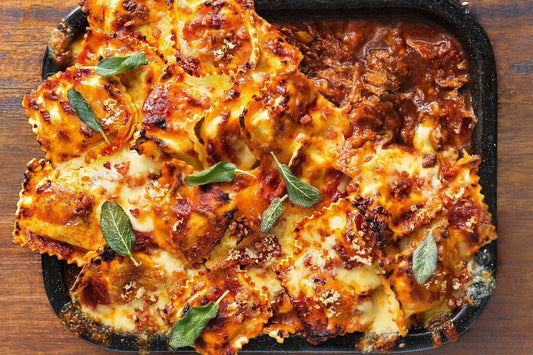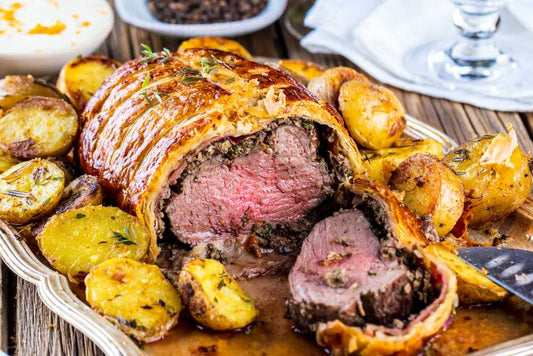
Antipasto, a traditional Italian starter course, offers a delightful array of flavors and textures that pave the way for a satisfying dining experience. Derived from the Latin "ante" (before) and "pastus" (meal), antipasto literally means "before the meal" and sets the stage for what's to come. Typically served before the primo (first course) in Italian dining, antipasto can be enjoyed in various forms and combinations, making it a versatile and appetizing addition to any meal or gathering.
Understanding Antipasto
Antipasto traditionally consists of a selection of cured meats, cheeses, marinated vegetables, olives, and sometimes seafood. It's meant to awaken the palate and stimulate the appetite without overwhelming it. The key to a successful antipasto platter lies in the balance of flavors, textures, and presentation. Here’s a comprehensive guide on how to create and enjoy antipasto:
Components of Antipasto
1. Cured Meats
Cured meats such as prosciutto, salami, coppa, and bresaola are staples of antipasto platters. They offer savory, salty flavors that pair well with various cheeses and complement the other elements of the dish.
2. Cheeses
A variety of cheeses is essential for a well-rounded antipasto experience. Include selections like fresh mozzarella, aged Parmigiano-Reggiano, creamy burrata, tangy gorgonzola, and perhaps a spreadable cheese like ricotta or mascarpone. Each cheese brings its own unique texture and taste profile to the platter.
3. Marinated Vegetables
Marinated vegetables add color, tanginess, and texture to the antipasto spread. Options include artichoke hearts, roasted red peppers, sun-dried tomatoes, marinated mushrooms, and pickled vegetables. These provide a refreshing contrast to the richer meats and cheeses.
4. Olives
A selection of olives—such as Kalamata, Castelvetrano, and Sicilian green olives—adds briny flavors and a Mediterranean touch to the antipasto platter. They are both a palate cleanser and a flavorful component.
5. Seafood (Optional)
Seafood items like marinated anchovies, smoked salmon, or grilled calamari can add a sophisticated touch to your antipasto if desired. They offer a lighter alternative to the cured meats and cheeses.
Accompaniments
Bread and Crackers
Provide a variety of bread and crackers to serve alongside the antipasto platter. Crusty Italian bread, breadsticks (grissini), and an assortment of crispy crackers are ideal for spreading cheeses or enjoying with the cured meats and vegetables.
Dips and Spreads
Enhance the flavors of your antipasto with dips and spreads such as olive tapenade, pesto, hummus, or balsamic reduction. These add depth and complexity to the palate and can be enjoyed with bread or as accompaniments to the meats and cheeses.
Fresh Herbs
Garnish your antipasto platter with fresh herbs like basil, rosemary, or thyme. These not only add visual appeal but also infuse subtle aromas that complement the flavors of the meats and cheeses.
Presentation Tips
1. Arrange Thoughtfully
When assembling your antipasto platter, consider the visual presentation. Arrange items in clusters or rows, keeping similar items together. This makes it visually appealing and easy for guests to navigate.
2. Balance Flavors and Textures
Ensure a balance of flavors (salty, savory, tangy) and textures (creamy, crunchy, chewy) across the platter. This ensures that every bite offers a new and enjoyable experience.
3. Serve at Room Temperature
Most components of antipasto are best served at room temperature to allow their flavors to fully develop. Take the meats and cheeses out of the refrigerator at least 30 minutes before serving.
Pairing Antipasto
Wine
Pairing antipasto with wine is a classic choice. Opt for Italian wines such as Prosecco, Pinot Grigio, Chianti, or a light Sangiovese. These wines complement the flavors of the meats, cheeses, and marinated vegetables.
Beverages
For non-wine drinkers, consider serving Italian-style cocktails like Aperol Spritz or Negroni, or simply offer sparkling water with a twist of lemon or lime.
Enjoying Antipasto
1. Savor Each Bite
Take your time to savor each component of the antipasto platter. Experiment with different combinations—pairing cheeses with meats, spreading dips on bread, or enjoying olives alongside marinated vegetables.
2. Share and Socialize
Antipasto is often served family-style or on a communal platter, encouraging sharing and conversation among guests. It sets a convivial atmosphere that enhances the dining experience.
3. Follow with Primo
After enjoying antipasto, proceed to the primo course of your meal, typically pasta, risotto, or soup. The antipasto serves as a delightful introduction to the main meal, preparing the palate for more flavors to come.
Conclusion
Antipasto is more than just an appetizer—it's a culinary journey through Italian flavors and traditions. By selecting quality ingredients, arranging them thoughtfully, and pairing them with suitable beverages, you can create a memorable antipasto experience for any occasion. Whether you're hosting a dinner party or simply enjoying a casual meal, antipasto sets the perfect tone for a delicious dining experience that celebrates Italian cuisine and the art of savoring good food and good company.



